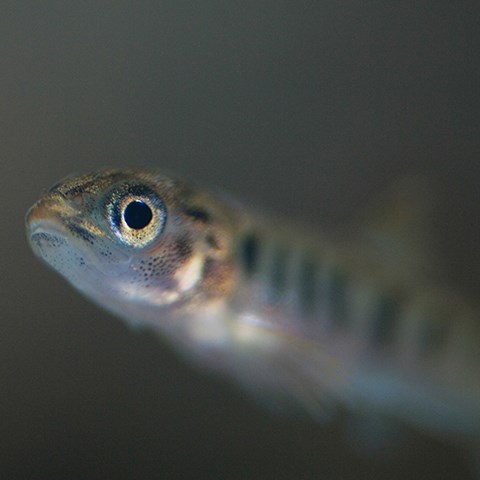Tough times for brown trout in a warmer world

Climate has large effects on the distribution of organisms, and species that thrive in cold water, like the brown trout, may face local population extinctions at lower latitudes when the water reaches high temperatures and the water flow is low. Results from a new study show that brown trout has declined in many rivers in the warmer regions of Sweden over the last thirty years, particularly in the smaller streams. Trout abundance in colder regions has instead increased in many places. Declines were also stronger for migrating populations, as compared to stream resident ones. With increasing frequency of summer heat waves and droughts, amplified by land degradation (intense ditching and irrigation, and loss of wetlands), the study highlights the need for measures that reduce the risk of reaching high water temperatures, maintain a continuous water flow, and guarantee free passage of organisms in the rivers.
A changing climate is affecting the survival and distribution of many species worldwide. Freshwater habitats are strongly affected by human activities, which compromises the ability of these ecosystems to cope with environmental changes. In the northern hemisphere, cold-water species have shown a tendency to disappear from the southern parts of their distribution range, which means that there is a risk of losing populations of such species, along with the values they provide to society.
”More and more often over the last years we have heard concerns about brown trout populations disappearing, or dramatically declining, in the southern regions of Sweden. In this study we demonstrate that many brown trout populations indeed are declining in our warmer regions, and that those populations that are migratory populations could be especially vulnerable to future increases in temperature” says Dr. Serena Donadi, the lead author of the study.
Within the project “COAST-LAND”, funded by the Swedish Research Council Formas, a researcher group from the Swedish University of Agricultural Sciences analyzed a 30-year time series of data on juvenile brown trout abundance at 218 sites in 174 rivers and streams from all over Sweden. The researchers detected declining trends in brown trout abundance in several smaller streams (≤ 6 m wide) in the southern Swedish regions. While the average climate is becoming progressively warmer, particular concern relates to more frequent and longer heatwaves and drought periods, which can have dramatic consequences in a degraded landscape. Brown trout do not tolerate water temperatures above 22-25 ºC for more than very short periods of time, and lack of water is an obvious and serious threat to their survival. Furthermore, elevated temperatures increase the frequency and severity of several diseases in brown trout.
In colder, northern regions brown trout instead tends to increase, especially in smaller streams. This could be caused by more favorable conditions than before, as temperature increase generates more optimal growth conditions for both brown trout and their prey organisms. While the trout is indeed adapted to relatively cold temperatures, they grow at maximal rates at around 15 ºC.
Swedish brown trout populations can be either sea- or lake-migrating or resident within streams. Migrating populations of trout showed sharper and more frequent declines in warmer regions than resident populations. One reason for this effect could be that low flow restricts the movements of migrating individuals. Another reason could be increased competition and predation from other species both in the rivers and in the sea.
The authors of the study stress the need for restoring large enough vegetated riparian zones, which can help buffer extreme summer temperatures through shading. It is also important to identify and protect areas where cooler water, like ground water, flows into rivers. Restoring stream-associated wetlands to maintain water in the river system, controlling water abstraction for irrigation, and securing a continuous water flow through rivers in association to dams are other important measures to ensure that drought events have as small effects as possible.
“These measures will help to increase the resilience of the river ecosystem to safeguard against both extreme climatic events and human impacts, and they are possibly the best defence we have against eventually losing brown trout from many southern rivers, especially along our coasts. We don’t know how much time we have at our disposal, so the time to act is now”, says Dr. Donadi.
This study is part of the project Coast-Land, funded by the Swedish Research Council Formas.
Contact persons
Serena Donadi, Researcher
Department of Aquatic Resources
Swedish University of Agricultural Sciences
serena.donadi@slu.se, +46(0)76-241 47 04
https://www.slu.se/en/ew-cv/serena-donadi/
Joacim Näslund, Researcher
Department of Aquatic Resources
Swedish University of Agricultural Sciences
joacim.naslund@slu.se, +46(0)73-055 79 91
Title of and link to scientific article
Serena Donadi, Joacim Näslund, Leonard Sandin, Berit Sers, Anti Vasemägi & Erik Degerman. 2023. Contrasting long-term trends in juvenile abundance of a widespread cold-water salmonid along a latitudinal gradient: effects of climate, stream size and migration strategy. Ecography.
https://onlinelibrary.wiley.com/doi/10.1111/ecog.06522